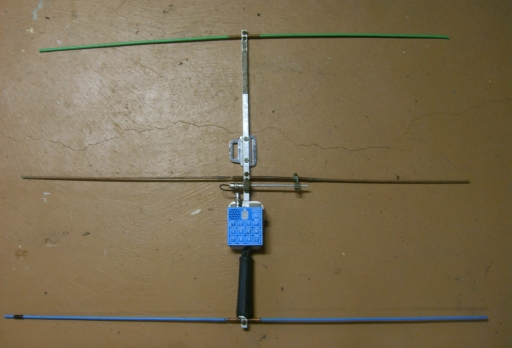ARDF, or Amateur Radio Direction Finding, is an exciting branch of amateur radio, attracting people of all ages. Sometimes called fox hunting or radio sport, ARDF is very similar to bush orienteering, the major difference being that participants use direction finding equipment to locate radio transmitters rather than navigating to known points on a map. In contrast to orienteering, the order of visiting each transmitter is not fixed – finding the optimal sequence is a key step to winning. ARDF joins basic radio skills with orienteering skills such as compass work, navigation and physical fitness. In addition, ARDF provides the enjoyment being out in the open and meeting friends with similar interests.
What am I looking for?
ARDF competitions are normally held in a rural area and often feature wooded valleys. Within this area are placed five transmitters that have to be found by the competitors. The five transmitters operate on a common frequency. Each transmitter operates for 1 minute and then is silent for 4 minutes, during which the other 4 transmitters operate. Each transmitter emits a unique identification code that can be received by participants. The identification signal consists of the morse code letters MO followed by a series of ‘dits’ – the number of ‘dits’ identifying the transmitter. These correspond to transmitters one through five. In ARDF, the transmitters are not usually “hidden” and a competitor is only required to find the control point, which will be within 2 meters of the transmitter. Included at the control point is a “punch” that is used to mark your card to prove that you have visited the control. A sixth transmitter, operating on a different frequency, is placed at the start/finish location, and operates as a homing beacon. It aids competitors in returning once finished.
A small teaching aid to learn the transmitter CW signals is available as a Flash file at http://www.pejla.se/listen_transmitter_eng.htm.
Who can participate?
If you can walk 5km, then you will be able to compete in club events with a degree of success. As the level of competition increases, so must your physical prowess. To become a Regional or World champion, you should expect to become very much more athletic. ARDF is a sport that can be practiced at almost any age. While younger participants may wish to negotiate the course at an aggressive pace, older entrants may travel the course in a more leisurely fashion.
What training is required?
Most people would have little difficulty understanding how to use ARDF equipment after only 5-10 minutes of explanation. No charge is levied for this instruction. Information sheets that explain how to operate the more common types of sniffer and review basic ARDF tactics are available on request.

A typical sniffer for the 2m band
How are events run?
Contestants are given a map of the area and sent out at regular intervals. They use their equipment to determine the direction of each transmitter and draw these on the map. The ability to read a compass and orienteering map is helpful. As they move to the closest transmitter, the competitor records more directions and soon gets an idea where all of the transmitters are. Participants may find the transmitters in any order they wish but they have to remember that there is a time limit set for the course. Most events allow 90-120 minutes for a 4-7 km course. Competitors who do not finish within this time are disqualified. The winner of the event is the competitor who finds the most transmitters, in the shortest time.
